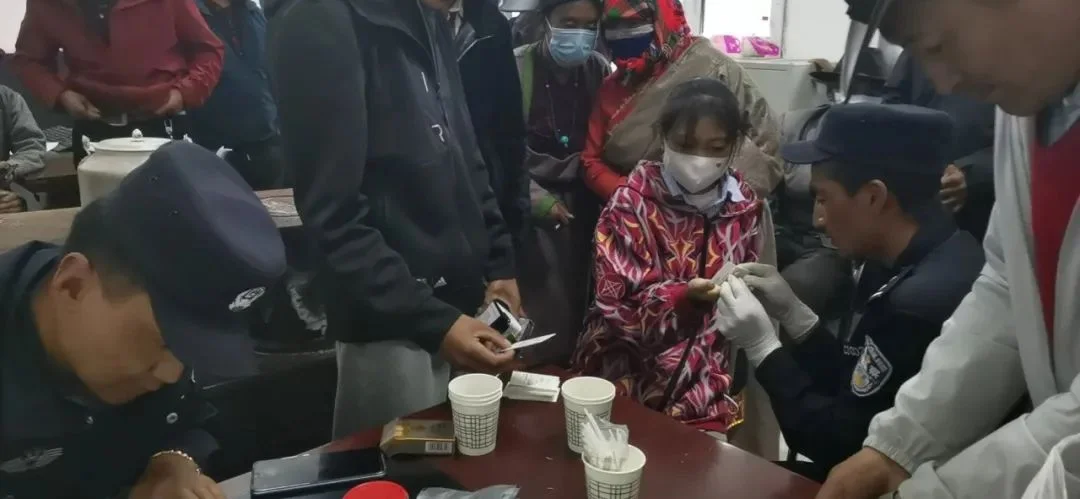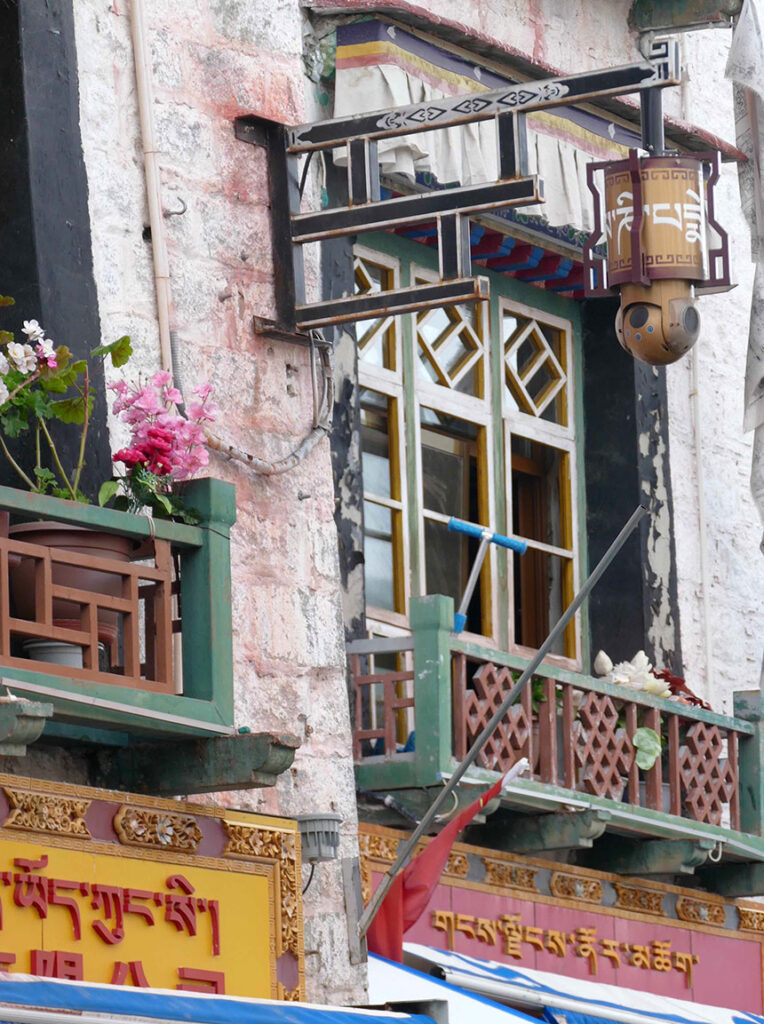
From Human Rights Watch: “Police collecting DNA samples from residents in Dritoe county, Yushu municipality, Qinghai province. (‘Zhahe police station caries out DNA blood sample collection,’ Zhidoi County Public Security, WeChat, September 10, 2021.)”
Case in point, the recent report by Human Rights Watch finding that Chinese authorities are systematically collecting DNA from residents of the Tibet Autonomous Region (which spans most of western Tibet), including by taking blood from children as young as 5 without the consent of their parents.
“The Chinese government is already subjecting Tibetans to pervasive repression,” said Sophie Richardson, China director at HRW and an old friend of the International Campaign for Tibet. “Now the authorities are literally taking blood without consent to strengthen their surveillance capabilities.”
DNA collection
According to HRW’s report, the DNA collection is taking place in every prefecture and municipality of the Tibet Autonomous Region, with all residents—including temporary ones—forced to provide a sample.
“There is no publicly available evidence suggesting people can decline to participate,” the report says, “or that police have credible evidence of criminal conduct that might warrant such collection.”
The report adds that the DNA gathering is part of “ongoing efforts by Chinese authorities to establish police presence at the grassroots level throughout the region.”
Some of the report’s most disturbing findings involve blood collection from children. That includes the taking of blood from kindergarten students in Tibet’s capital of Lhasa, and the collection of DNA from all boys ages 5 and older in a Tibetan township of Qinghai province.
History of control
While mass blood testing of ordinary Tibetans is outrageous, it is not very surprising. Since China began its illegal occupation of Tibet over 60 years ago, it has subjected the Tibetan people to Orwellian levels of social control.
Although the Chinese government violates human rights across the territory it rules—and increasingly exports its repressive technology to countries around the globe—Tibet has been a laboratory for its evolving methods of subjugation.
From 2011 to 2016, Chinese official Chen Quanguo served as Party Secretary in the Tibet Autonomous Region, where he developed a system of constant mass surveillance, torture and militarization. That system included forcing Tibetans to spy on their neighbors, stationing Communist Party cadres in Tibetan Buddhist monasteries and incentivizing Tibetan-Chinese intermarriage as a way to eliminate Tibetans’ distinct identity.

A perfect symbol of China’s surveillance state in Tibet: a camera disguised as a Buddhist prayer wheel.
After his brutalization campaign in the TAR, Chen moved on to serve as Party Secretary in Xinjiang (which Uyghurs know as East Turkestan). There he led China’s infamous Uyghur genocide, showing how the Chinese government’s abuse of Tibetans spreads to other groups.
The virus
Although Chen has left the TAR, the surveillance state he helped build there has continued to grow. Most recently, the ongoing COVID outbreak in Tibet has exposed the brutal costs of China’s system of control.
For one thing, the outbreak itself appears to be a consequence of China’s failed leadership. I am not just talking about the fact that COVID-19 emanated from Wuhan; but also the fact that the current spread of the virus in Tibet is quite possibly the result of Chinese tourism to the region encouraged by the Chinese government. (It should be noted that this promotion of so-called “domestic tourism” stands in stark contrast to China’s near-total ban on visitors to Tibet from outside the People’s Republic of China.)
China’s policy failure hasn’t stopped it from using a predictably heavy hand to deal with the outbreak its own actions facilitated. After COVID-positive cases emerged in Tibet, authorities placed the entire population of 800,000 in the Shigatse (Chinese: Xigaze) prefecture-level city under a three-day complete lockdown. Authorities also imposed partial lockdowns in Lhasa, Nyingtri (Linzhi) and Lhoka (Shannan).
Since then, horrifying videos of police and health officials manhandling Tibetans have circulated on social media. One particularly disturbing clip shows a Tibetan policeman kicking and smacking a Tibetan herder who had come back into town not knowing about the outbreak while he was herding in the mountains. Another clip shows authorities dragging a screaming woman out of a restaurant and throwing her into a police SUV after she declined to show photo ID.
View this post on Instagram
To be clear, I am in full support of taking necessary steps to prevent the spread of COVID, including vaxxing, masking and testing. But many of China’s measures in Tibet have not only been needlessly violent but also seem highly performative. The Chinese government often claims its authoritarian approach is necessary to protect and uplift Tibetans (a claim that is predicated on racist and colonialist assumptions). Nevertheless, the Chinese government’s disastrous creation and handling of the outbreak in Tibet shows how wrongheaded its repression is on both a moral and a practical level.
Bleeding Tibet dry
China’s DNA collection in Tibet has added a vampiric cast to its surveillance and control state, but it is of a piece with decades of the Chinese government crushing Tibetans’ culture, religion, language and freedom. The end goal is not simply to bring Tibetans to heel, but to eliminate their identity altogether so that the Tibetan people no longer exist as a separate group deserving self-determination.
Moreover, as I mentioned above, China’s surveillance technology and other tools of repression are spreading from Tibet to other places, including Xinjiang and foreign countries. If that trend continues, Tibet’s dystopia may become a dystopian future for people across the globe.
The best way to prevent that from happening is to head it off where it’s happening now. That means pressuring China to recognize Tibetans’ self-determination through peaceful negotiations with Tibetan leaders.
You can play a part in that by signing ICT’s petition to your members of Congress, asking them to cosponsor the Resolve Tibet Act, which will recognize Tibet’s status as illegally occupied and add pressure on the Chinese government to restart negotiations for the first time in more than a decade.
Read Human Rights Watch’s report on mass DNA collection in Tibet.
